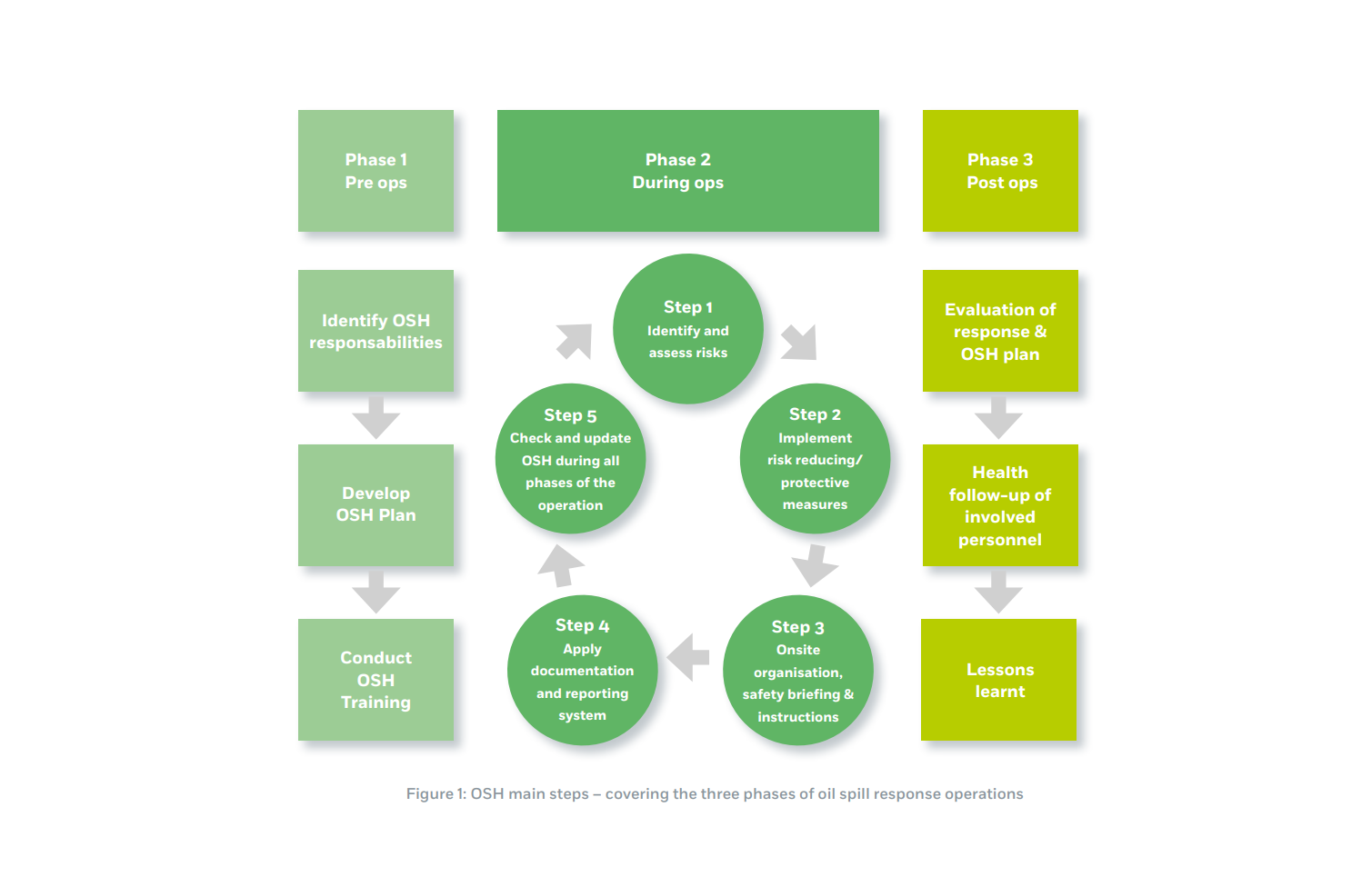- EMSA issues guidelines on health & safety issues relating to oil spills.
- These guidelines cover occupational safety and health (OSH) considerations.
- These guidelines provide an overview of the main types of risks that can be encountered.
EMSA has published guidelines intended to provide useful and practical information to relevant responders, administrations or industry when addressing health and safety issues linked specifically to marine oil spill response operations.
These guidelines cover occupational safety and health (OSH) considerations specifically for marine oil spill response operations (i.e., at-sea / offshore, on the shoreline), providing an overview of the main types of risks that can be encountered when conducting such operations, and the main steps to be taken to identify, assess and address these risks.
The document covers three phases of oil spill response operations:
- Pre-operational,
- During operations and
- Post-operational phases

The above OSH requirements or steps should (where possible) form the minimum basis for systematic OSH work during oil spill response operations at sea / offshore and on the shore, however, these may be addressed or implemented differently at the national level.
The above requirements also highlight the responsibility of the authority in charge of the overall management of the response operations in addressing OSH concerns and planning adequate measures in the response operation. This can vary from country to country and some countries/administrations/industry might have additional requirements over and above these.
Challenges in oil spill response operations
Particular challenges that can be encountered by those participating in oil spill response operations include:
- Oil hazards: In case of large spills multiple hazards to health and life can arise, even from a known substance like petroleum/oil; health hazards that can manifest during or after the response operations;
- Use of PPE: The mandatory use of Personal Protective Equipment (PPE) (e.g., life jacket, mask, helmet, gloves, boots, connecting / safety line to vessel….) in oil spill response operations makes the responder’s work more complicated and can cause health hazards by itself (e.g., reduced vision capacity, less mobility, heat stress, ….);
- Environment: The responders must often work in potentially hazardous weather conditions (e.g., hot or cold weather, poor visibility, high waves, strong winds, tides, etc.) or in workplaces or terrains that are unknown to them and can be potentially hazardous even without the presence of oil (i.e., on vessels, rocky beaches, ice ground, etc., with the potential hazard of drowning, falling, slipping, etc.), and where wildlife (e.g., birds, mammals, etc.) may also be present. When working on shore there are risks provided by the tides, waves and local currents;
- Work activities and equipment: The responders must do manual work and often handle large equipment for the mechanical recovery and containment of the oil, which may come with risks associated with operating machines, handling of objects, carrying by hand, movement;
- Physical tiredness (fatigue): Clean-up operations are physically exhausting, last long (initial stages of response, long shifts,), and might require handling of (heavy) loads and equipment;
- Time pressure: When an oil spill is threatening the shoreline, the response at sea has to be executed very fast or it may become necessary to protect sensitive or other important areas from contamination very quickly (e.g., by setting up booms, etc.);
- Psychological pressure: Like other response operations, clean-up operations at-sea may be undertaken in conjunction with search and rescue (SAR) operations, which may involve sightings of dead bodies or contact with victims (drifting bodies) and may cause additional stress to the responders;
- Training/Personnel: Diverse and rapid training and the varied levels of knowledge of responders can be challenging during the actual operations;
Public pressure: There is often large pressure on the responders by the public, politics, media, etc., to remove the oil from the environment or oiled wildlife as quickly and efficiently as possible, which may add to the overall stress of the responders.
Did you subscribe to our daily Newsletter?
It’s Free! Click here to Subscribe
Source: EMSA























